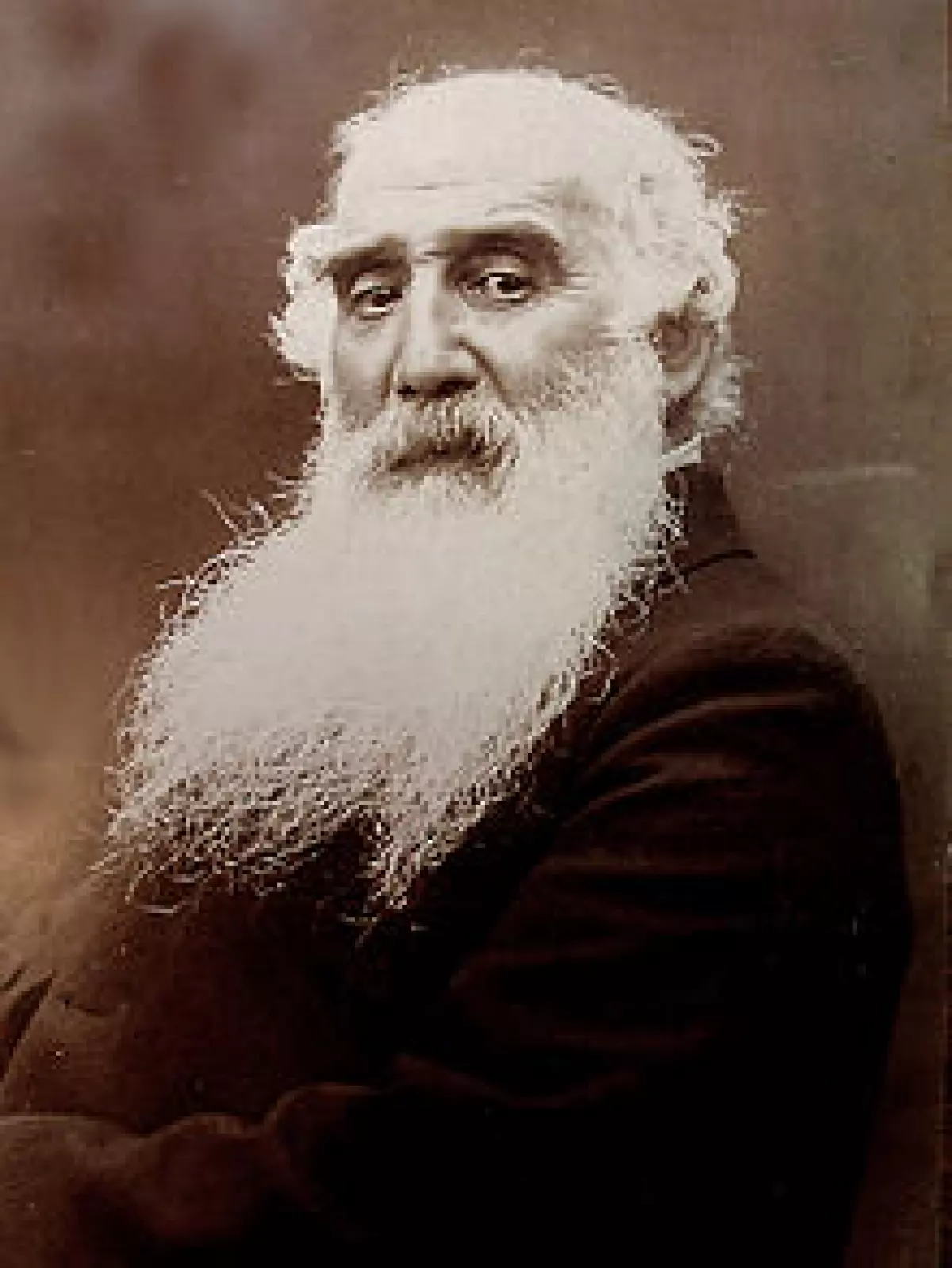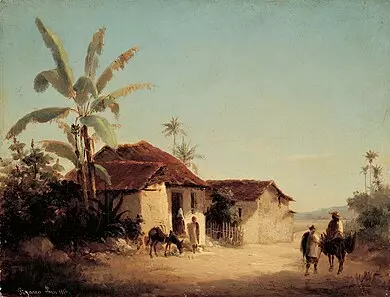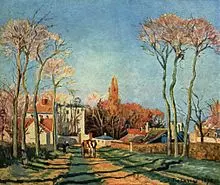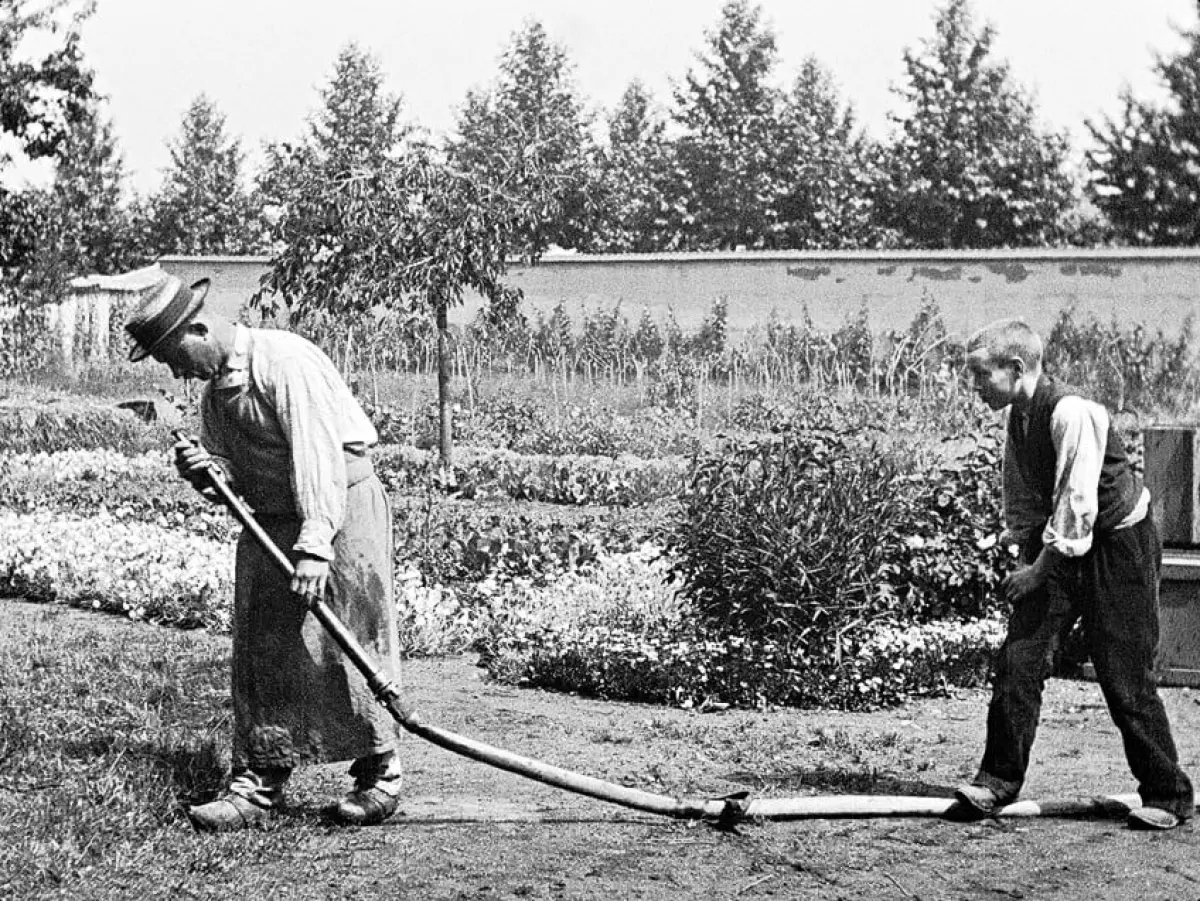
A Danish-French Impressionist Master
Jacob Abraham Camille Pissarro, born on July 10, 1830, was a Danish-French Impressionist and Neo-Impressionist painter. He made significant contributions to both Impressionism and Post-Impressionism, leaving a lasting impact on the art world. Pissarro studied under renowned artists like Gustave Courbet and Jean-Baptiste-Camille Corot, and later worked alongside Georges Seurat and Paul Signac in the Neo-Impressionist style.
Pissarro's work is characterized by his emphasis on natural settings and his portrayal of the "common man" in his paintings. He believed in capturing individuals in their natural environments, without grandeur or artifice. His unique approach to painting revolutionized the art scene of his time.
 Landscape with Farmhouses and Palm Trees, c. 1853. Galería de Arte Nacional, Caracas.
Landscape with Farmhouses and Palm Trees, c. 1853. Galería de Arte Nacional, Caracas.
The Dean of Impressionist Painters
Pissarro's influence on the art world extended beyond his own work. He played a crucial role in the establishment of the Impressionist movement, acting as a father figure to the Impressionists and the major Post-Impressionists, including Cézanne, Seurat, Gauguin, and van Gogh.
Art historian John Rewald referred to Pissarro as the "dean of the Impressionist painters," not only because of his age but also because of his wisdom, kindness, and warmhearted personality. His fellow artists respected him as a mentor and sought his advice. Pissarro's impact on the art world was profound, and he left behind a rich artistic legacy.
Early Years and Education
Pissarro was born in 1830 on the island of St. Thomas, which was then part of the Danish West Indies. His father, Frederick Abraham Gabriel Pissarro, was a merchant of Portuguese Jewish descent, and his mother, Rachel Manzano-Pomié, came from a French-Jewish family.
At the age of twelve, Pissarro was sent to boarding school in France, where he studied at the Savary Academy in Passy near Paris. He developed a deep appreciation for the French art masters and honed his skills in drawing and painting. After completing his education, Pissarro returned to St. Thomas and worked as a port clerk while pursuing his passion for art.
 Two Women Chatting by the Sea, St. Thomas, 1856
Two Women Chatting by the Sea, St. Thomas, 1856
Life in France and the Impressionist Movement
In 1855, Pissarro moved back to Paris, where he worked as an assistant to Anton Melbye, a painter. He studied the works of renowned artists like Courbet, Daubigny, Millet, and Corot. However, Pissarro soon grew dissatisfied with the traditional teaching methods of these artists and sought alternative instruction.
He found inspiration in the works of Camille Corot, with whom he shared a love for portraying rural scenes from nature. Pissarro began painting outdoors, capturing the daily realities of village life. His paintings depicted the French countryside in its picturesque and agricultural glory, showcasing the beauty of everyday life.
 Jalais Hill, Pontoise, 1867. Metropolitan Museum of Art
Jalais Hill, Pontoise, 1867. Metropolitan Museum of Art
The Birth of Impressionism
Pissarro's unique approach to painting caught the attention of other like-minded artists, including Claude Monet, Paul Cézanne, Armand Guillaumin, and Paul Gauguin. They admired his commitment to painting individuals in natural settings and his rejection of artificiality and grandeur in art.
In 1873, Pissarro played a pivotal role in establishing a collective society of aspiring artists. He encouraged and supported fellow artists, helping to hold the group together. Pissarro was the only artist to exhibit his work at all eight Paris Impressionist exhibitions from 1874 to 1886, cementing his position as a leading figure in the movement.
From Impressionism to Neo-Impressionism
In the late 1880s, Pissarro experimented with new themes and techniques in his paintings. He explored the Neo-Impressionist style popularized by artists Georges Seurat and Paul Signac, using small patches of pure colors to create the illusion of blended colors when viewed from a distance. Pissarro's work during this period differentiated from his earlier Impressionist pieces, and he exhibited alongside Seurat and Signac in the 1886 Impressionist Exhibition.
However, Pissarro eventually abandoned Neo-Impressionism, finding its system too artificial. He returned to his earlier style with a more refined color scheme and a firmer drawing technique. His paintings became more subtle and showed a heightened mastery. Although he left the movement, Pissarro's influence on the art world continued to grow.
 Hay Harvest at Éragny, 1901. National Gallery of Canada, Ottawa
Hay Harvest at Éragny, 1901. National Gallery of Canada, Ottawa
Legacy and Influence
Camille Pissarro's impact on the art world and the Impressionist movement cannot be overstated. His revolutionary approach to painting, capturing life in natural settings and embracing the "common man," left a lasting impression on subsequent generations of artists. Pissarro's work continues to be celebrated, and his paintings have fetched millions of dollars at auctions.
Throughout his life, Pissarro mentored and inspired other artists, including Paul Cézanne, who regarded him as a father figure. Pissarro's descendants also became painters, carrying on his artistic legacy. His influence on the art world remains significant, and his contributions to Impressionism and Post-Impressionism continue to be studied and admired.
Note: The original article contained information about Nazi-looted Pissarro paintings. However, to adhere to the guidelines, this information has been omitted from the rewritten article.
















